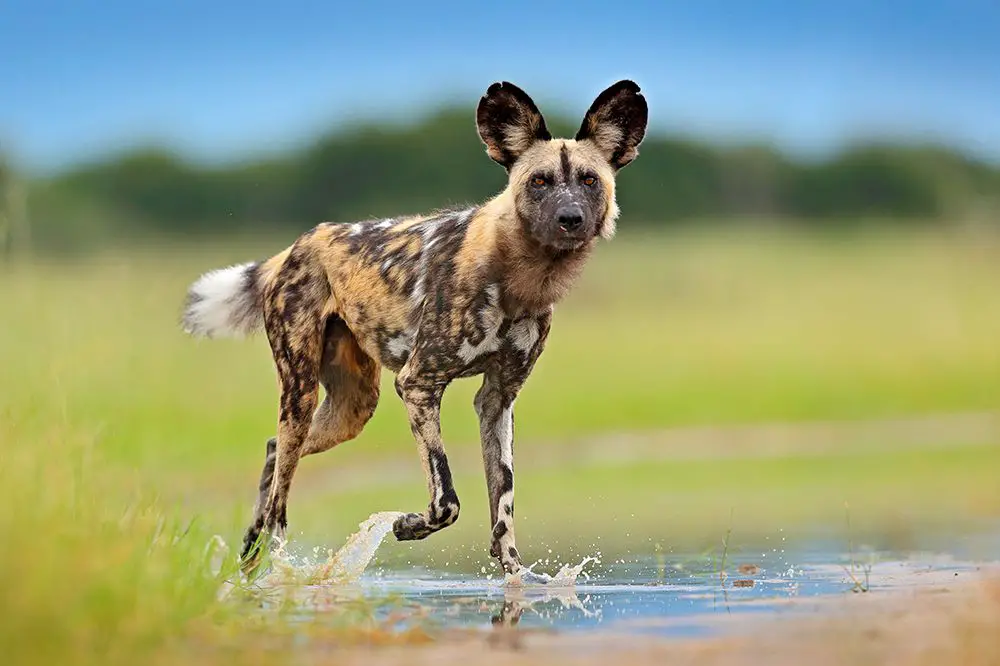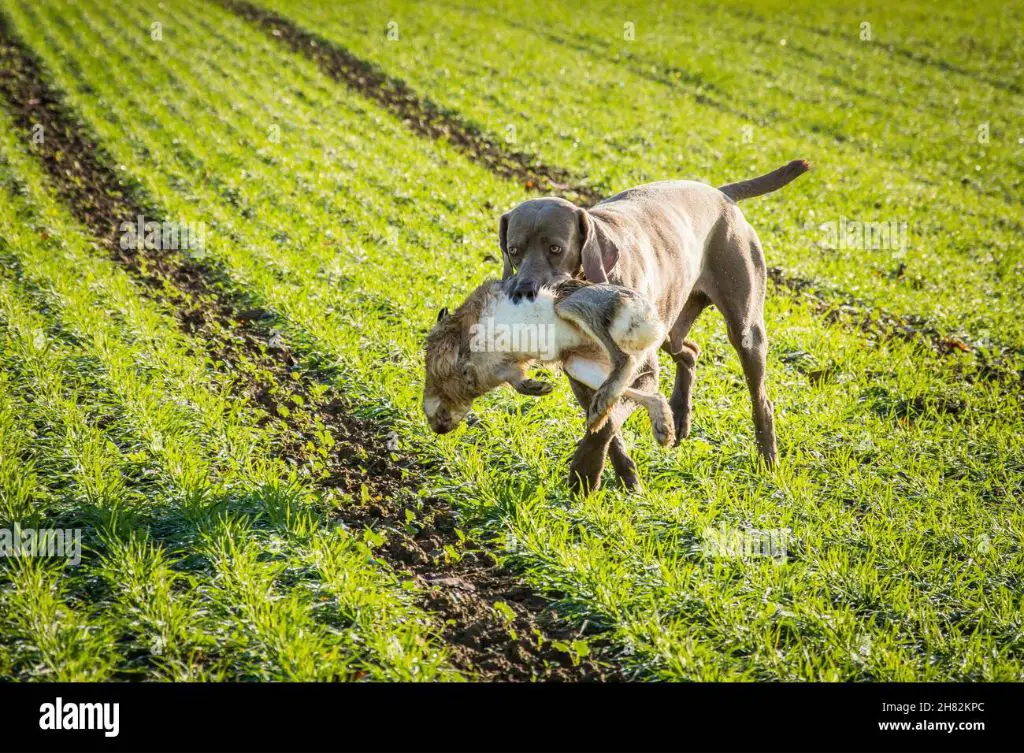Introduction
Wild dogs such as wolves, coyotes, and foxes are fascinating animals that have adapted to survive and thrive in a wide range of environments. Their dietary needs and preferences provide an interesting window into their natural behavior, physiology, and role within local ecosystems.
In this article, we will explore whether wild dogs are herbivores that only eat plant material or carnivores that primarily eat meat. Looking at examples of different wild dog species and examining details like their digestive systems and hunting behaviors will reveal the answer.
Definition of Wild Dogs
Wild dogs are canid species that live independent of human domestication. There are several different wild dog species found throughout the world, the most well-known being wolves and coyotes. Other examples of wild dog species include African wild dogs, dholes, dingoes, and black-backed jackals.
Wild dogs are medium to large sized canids that live and hunt in social groups called packs. Packs are usually made up of a breeding pair of adults along with their offspring from previous years. Wild dogs have a complex social structure and hierarchy within their packs.
Unlike their domesticated dog cousins, wild dogs survive by hunting and scavenging prey rather than relying on humans for food. They inhabit various wilderness areas and ecosystems depending on the species, including forests, tundras, grasslands, and deserts.
Common physical traits among wild dog species are large pointed ears, long legs, bushy tails, narrow chests, and wide skulls. Their coats and colors vary between species and habitat. Wild dogs are intelligent, social animals that communicate via body language, vocalizations, scent marking, and more.
Herbivore vs Carnivore
Herbivores and carnivores are two types of animals classified by their diets. An herbivore is an animal that gets its energy and nutrients almost exclusively from plant matter. Herbivores are adapted to digest and derive nutrition from plant materials like leaves, roots, stems and fruits. Their jaws move only vertically to grind up plant matter, and their digestive systems contain bacteria capable of breaking down cellulose from plant cell walls.
In contrast, carnivores are animals whose primary food source is meat or flesh. Carnivores get their nutrients and energy by eating the flesh of other animals. They are equipped with sharp teeth and claws for killing prey and tearing meat. Their digestive systems are able to handle high protein foods. While herbivores only eat plants and vegetation, carnivores only eat other animals. Omnivores can obtain their nutrition from both plant and animal sources.
Wild Dog Diet

Wild dogs are carnivorous, meaning the majority of their diet consists of meat. As predators, they primarily hunt and kill smaller animals for food. Some examples of common prey for wild dogs include:
- Deer
- Rabbits
- Rodents
- Birds
- Lizards
- Insects
Wild dogs have a simple digestive tract suited for processing meat and bone. Their stomachs produce strong acids and enzymes capable of breaking down protein and fat. The jaws and teeth of wild dogs like wolves and coyotes are adapted for catching prey, ripping flesh, and crunching bones.
In some cases, wild dogs will also eat fruits, berries, and vegetation, but meat makes up the bulk of their nutrition. Their bodies require a high-protein carnivorous diet to thrive.
Wolf Diet Example
Wolves are perhaps the most well-known examples of wild dogs with a strictly carnivorous diet. As pack hunters, wolves work together to prey on large animals like deer, elk, moose, and bison. An average wolf consumes between 5 to 7 pounds of food per day.
The wolf diet consists almost entirely of meat from these large prey animals. Studies of wolf scat and remains at kill sites indicate that ungulates like deer make up 60-80% of the diet for wolves living in North America. The rest of their diet is comprised of smaller mammals like beavers, rabbits, and rodents.
Wolves may occasionally eat plant material like berries or grass, but meat from large prey animals provides the vast majority of their nutrition and calories. The proportion of large ungulates in their diet allows wolves to thrive on a strictly carnivorous regimen.
Coyote Diet Example
Coyotes are opportunistic carnivores that primarily hunt small mammals like rabbits, rodents, birds and reptiles. However, they will also consume fruits and vegetables when available. Coyotes have adapted to a wide variety of habitats across North America and their diet varies based on the ecosystem they inhabit.

In grasslands, coyotes mostly consume rodents like prairie dogs, pocket gophers and ground squirrels. They also prey on rabbits, snakes, lizards and large insects. In desert ecosystems, their diet shifts to consist of reptiles like snakes and lizards as well as desert rodents like kangaroo rats and pocket mice.
In forested areas, coyotes hunt for deer, elk, voles, mice, squirrels and hares. They also consume fruits like berries when in season. Near the coastlines, coyotes prey on fish, crustaceans and other marine life. They have even been known to eat seaweed and grass in coastal habitats.
Coyotes are highly adaptable hunters that can vary their diet dramatically based on habitat and food availability. However, the majority of their diet consists of small mammals, supplemented by reptiles, birds, insects, fish and seasonal fruits.
Other Wild Dog Diet Examples
Other wild dog species around the world also exhibit carnivorous diets and behavior. For example, the African wild dog primarily hunts antelopes, warthogs, birds and reptiles. They have powerful jaws to crush bones and consume every part of their prey. The dingo in Australia is another dog species that mainly eats mammals like kangaroos, wallabies, possums and rodents. They also sometimes eat birds, reptiles and insects. Meanwhile, the bush dog found in Central and South America is known to hunt pacas, capybaras, armadillos and other small mammals. Their wide jaw allows them to eat sizeable prey whole. Overall, wild dogs around the world are well-adapted hunters and meat eaters. Their behavior, anatomy and hunting skills all point to them being carnivores.
Digestive System
As carnivores, wild dogs have digestive systems adapted for digesting meat and bone. They have a simple stomach, short digestive tract, and special teeth to quickly devour prey. The stomach secretes strong hydrochloric acid to break down protein and kill bacteria. It allows for rapid digestion of meat compared to herbivores or omnivores.
Their lower intestines are short and smooth, allowing for quick expulsion of waste which helps minimize parasite issues from rotting meat. The jaws and teeth of wild dogs are specialized for tearing flesh rather than grinding tough plant matter, evidence of their carnivorous digestive system. Overall, wild dogs’ digestive anatomy and physiology are designed to maximize absorption of proteins and fats from meat.
Hunting Behavior

Wild dogs are skilled hunters that have evolved a variety of strategies and techniques to catch prey. They typically hunt in packs, which allows them to take down larger animals through coordinated attacks. Here are some of the common hunting behaviors exhibited by wild dogs:
Stalking – Wild dogs often stealthily approach their prey while trying to remain undetected. They use vegetation, terrain, and weather conditions to their advantage to get as close as possible before attacking.
Flushing – Some wild dogs will scare out prey from hiding spots or dense vegetation in order to chase it down in the open. They may bark or make noise to flush out the prey.
Encircling – Packs of wild dogs will attempt to surround prey, cutting off any escape routes. They space themselves apart and close in, giving the prey little chance to get away.
Chasing – Once prey starts running, wild dogs will chase it over long distances at high speed. They take turns leading the chase to avoid wearing out any single dog.
Harassing – If they are unable to immediately catch the prey, wild dogs may harass and nip at it repeatedly until it tires out. They look for opportunities to hamstring or disable the animal.
Cooperative hunting – Packs allow wild dogs to employ complex hunting strategies requiring teamwork. Some dogs direct the prey while others wait to ambush it. The alpha dogs lead the hunt.
These strategic hunting behaviors and adaptations allow wild dogs to successfully catch and kill prey, even animals much larger than themselves.
Conclusion

After examining the diet, digestive system, and hunting behaviors of wild dogs, it is clear that they are carnivores. Wolves, coyotes, African wild dogs, and other wild canids subsist primarily on the meat of other animals. Their digestive systems are adapted to processing this protein-rich diet. They have sharp teeth designed for tearing flesh, strong jaws, and highly acidic stomachs compared to herbivores. Wild dogs also exhibit hunting and prey-killing behaviors that are characteristic of carnivores, not plant-eaters.
In summary, despite some eating plant material on occasion, wild dogs derive the vast majority of their nutrients from meat. Their bodies and behaviors are optimized for hunting, catching, and consuming other animals. Based on the available evidence, wild dogs can definitively be classified as carnivores.